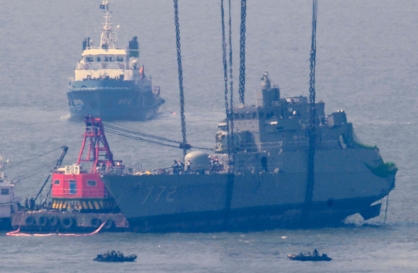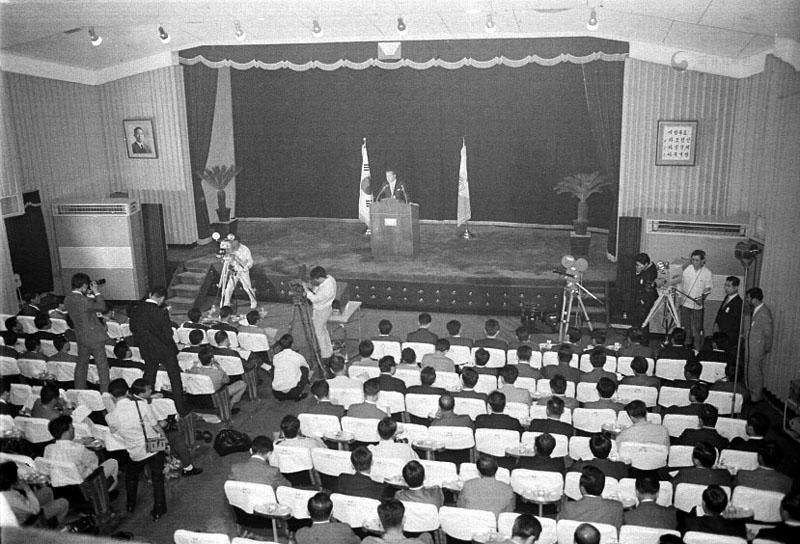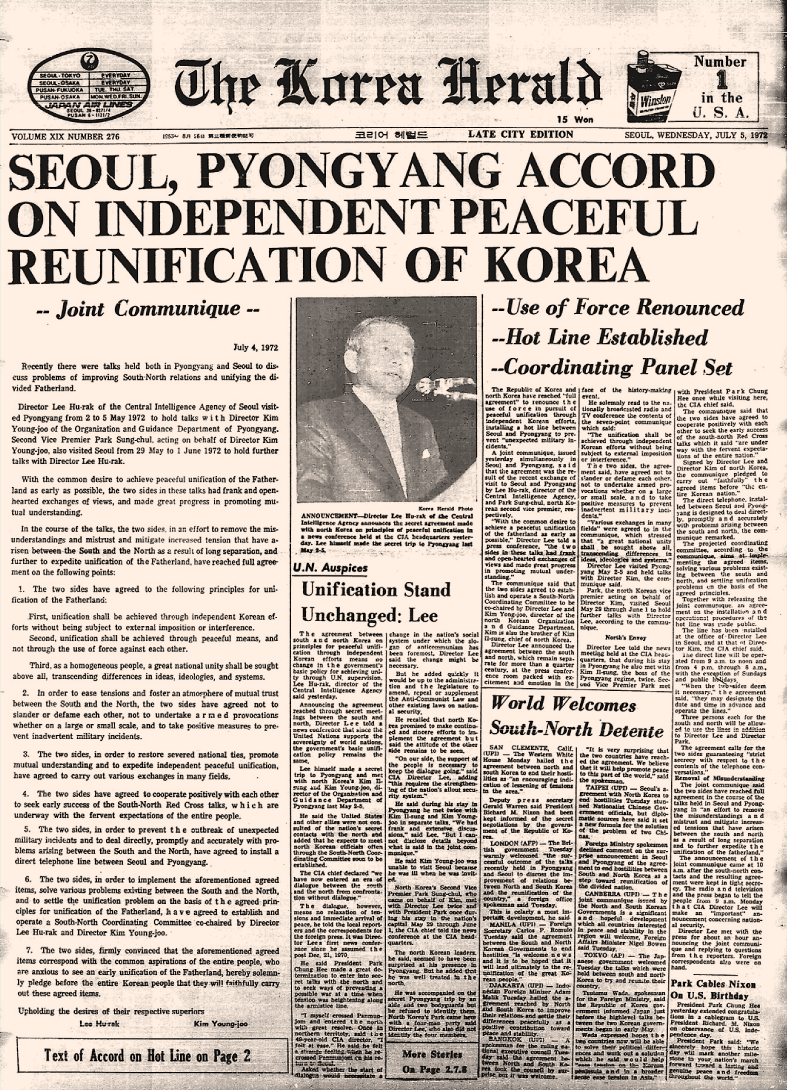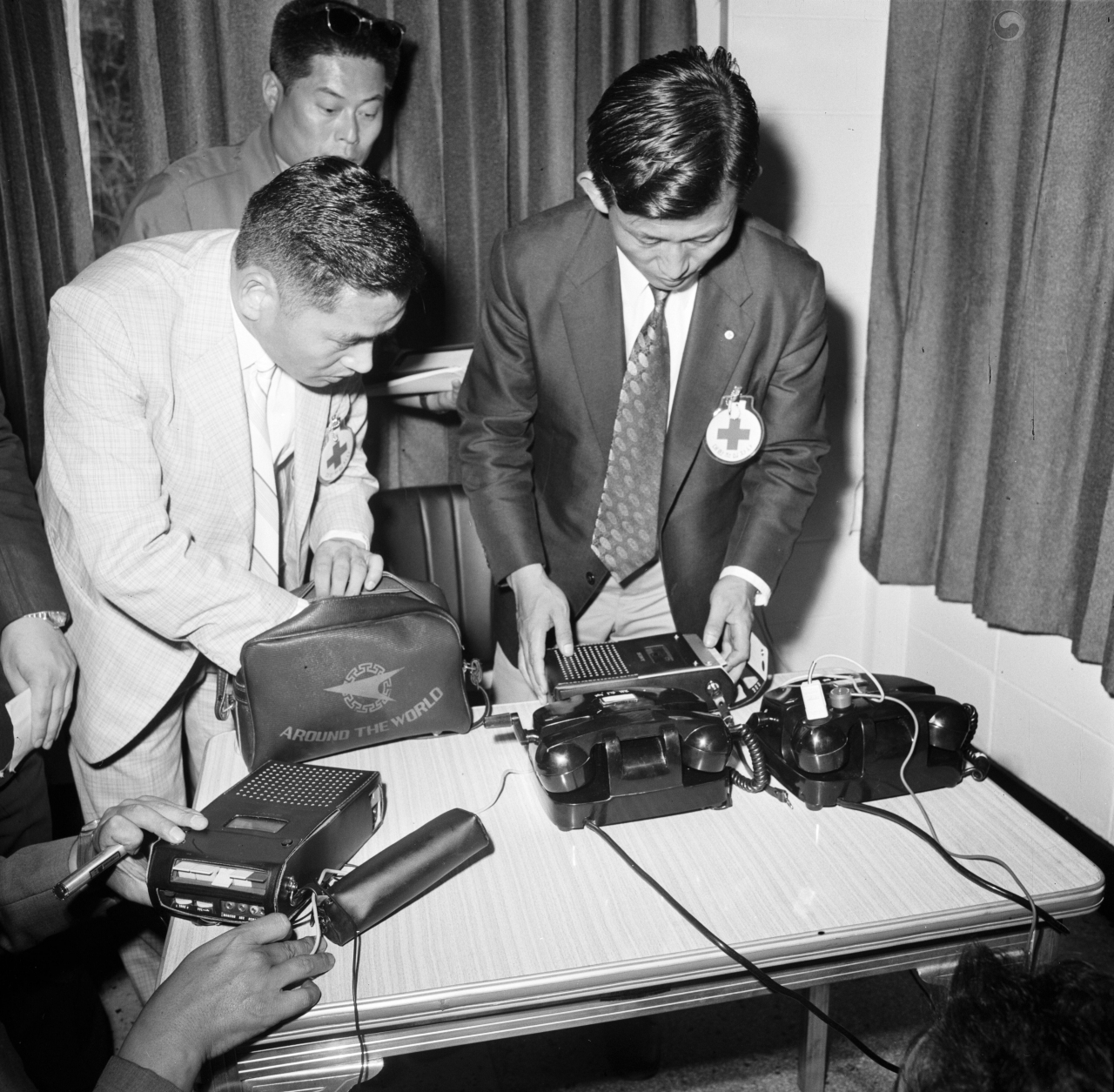Most Popular
Korean History
-
1
2014 ferry disaster left scars that never healed

-
2
In 2012, K-pop makes leap from 'Gangnam' to the world

-
3
Deadly sinking of Navy ship in 2010 marks worst postwar military disaster

-
4
In 2008, Korea's National Treasure No. 1 went down in flames

-
5
In 2005, science world’s biggest scandal unravels in Seoul

[Korean History] The short-lived inter-Korean detente during early '70s
The first joint statement of the Koreas in 1972 bears symbolic significance, but failed to improve inter-Korean relations
By Yoon Min-sikPublished : March 8, 2023 - 17:37
The 1970s was apparently an embodiment of paradox.
The world’s two superpowers were at fierce competition with one another while also engaging in detente diplomacy on the surface amid a proxy war in Vietnam dragging on through the first half of the decade.
On the Korean Peninsula, the two Koreas -- separated by the 38th parallel -- agreed on their first-ever accord, only to be followed by the most volatile confrontations.
The July 4 South-North Joint Statement, or Communique of 1972, was the first joint statement of the two Koreas since their respective governments were established. It was effectively the first time the Koreas officially recognized each other -- albeit only partially -- on the international stage. Both Koreas claim that they are the sole lawful occupant of the Korean Peninsula and the outlying islands.
In light of the events that followed, it is generally stated that the statement did little to relieve the tension between Seoul and Pyongyang. Some scholars say that it was used mainly for leaders of both states to reinforce their leadership, rather than to improve inter-Korean relations.
Its limits notwithstanding, the document bears historical significance for being the first attempt by the two Koreas to establish a channel of communication with each other. The two parties also reached an agreement on the principles of a reunified Korea, marking the first time either side saw the possibility of unity via nonmilitary options.

A deal amid dictatorships
The July 5, 1972 edition of The Korea Herald dedicated its entire front page to the landmark agreement, including its full content, the comments of then-South Korean intelligence chief Lee Hu-rak, the negotiation process and reactions from the rest of the world. The standards set then -- renouncing the use of force; establishing an inter-Korean hotline connecting the intelligence chiefs of the two Koreas; and a panel consisting of members from both Koreas to coordinate the unification process – would go on to affect subsequent efforts to improve inter-Korean relations.
More specifically, the two sides agreed on three principles for achieving unification: It should be achieved independently of foreign powers and interference; it shall be achieved peacefully; and the two countries would seek first a “great national unity, transcending differences in ideas, ideology and systems, as one people.”
The two sides also agreed not to slander or defame each other, or to undertake military provocations of any scale. This, however, was not upheld by Pyongyang. The North fired a ballistic missile south of the Northern Limit Line in November of the following year, and has fired countless more since then.
Despite its limited effects on curbing violence -- military or verbal -- on the peninsula, the joint statement has had considerable impact on domestic politics for both sides.
Intelligence chief Lee, Seoul’s point man on the negotiations, was also then-President Park Chung-hee’s confidante. He played a large part in the Park administration’s Yushin Constitution that granted it dictatorial powers. Park’s self-coup to enact the Yushin Constitution took place in October 1972, just three months after Seoul and Pyongyang signed the accords.

Another two months later, North Korean leader Kim Il-sung solidified his rule over the country with a new constitution that created an executive presidency, a position which he claimed until his death in 1994.
In short, the leaders of the two Koreas acquired constitutional grounds for the dictatorial leadership of their respective countries in less than six months after signing the accord.
This series of events has led to the belief that the July statement’s bigger role was its application in domestic politics.
In a 2016 study, Nam Kyung-kyu of the Asiatic Research Institute at Korea University pointed out that Park realized the political benefits of the South-North dialogue and used it to strengthen his power. He also said that it is believed that kicking off the inter-Korea talks procured the pretext for Park’s permanent rule over South Korea.
In the presidential address that took place after passing the Yushin Constitution, Park states that he amended the Constitution in order to “provide the foundation for peaceful unification and prosperity.”
“I believe that all the people (of South Korea) will put their collective efforts to support this measure (amendment), in their pursuit of our country’s unification and prosperity,” Park said, making it clear that South Koreans’ support for his version of the Constitution is directly linked to their support for improvement of inter-Korean relations.
“But if the people do not agree to the constitutional amendment, I will regard this as a sign that they do not want the South-North dialogue and seek new methods for unification of our country,” he said.
As such, Nam said the joint statement had a bigger impact South Korea's domestic politics rather than aiding actual progress in inter-Korean relations.
Accord's failure to block violent provocations
The aforementioned Korea Herald edition shows that the rest of the world approved of the agreement in a story headlined “World welcomes South-North detente.”
But the hopeful atmosphere was short-lived, with talks being effectively squashed when North Korea refused negotiations for a coordination panel in August 1973. Although intermittent talks would take place throughout the decade -- including the inter-Korean Red Cross talks that continued from 1971 to 1978 – attempts at consistent exchange turned out to be futile, at least for the time being.
What took place following the failed talks were provocations from North Korea. In March 1973, a skirmish occurred near the Military Demarcation Line, after which South Korean retaliatory artillery fire destroyed a North Korean guard post. The following year, a South Korean Coast Guard patrol boat was attacked by North Korean vessels in South Korean waters near Gangwon Province, resulting in death or disappearance of all of 28 sailors aboard.

Perhaps the most infamous case in the 1970s was the so-called “Korean axe murder incident” of 1976. Two US Army officers were brutally murdered with axes by North Korean soldiers in the Demilitarized Zone, resulting in the US and South Korea’s show of force via Operation Paul Bunyan. The Korea Herald's Aug. 20, 1976 edition reported on the United Nations Security Council’s strong condemnation of the axe murder incident in its story headlined "UNC condemns N.K. bestiality at MAC meet."
These incidents made it clear that a mere signed agreement could not alleviate decadeslong tensions that have persisted since the 1950-1953 Korean War. The axe murder case also led to the inter-Korean hotline being cut off, and it would take over two decades before it would be reinstated in 2000.







![[KH Explains] Hyundai's full hybrid edge to pay off amid slow transition to pure EVs](http://res.heraldm.com/phpwas/restmb_idxmake.php?idx=644&simg=/content/image/2024/04/18/20240418050645_0.jpg&u=20240419100350)












![[From the Scene] Monks, Buddhists hail return of remains of Buddhas](http://res.heraldm.com/phpwas/restmb_idxmake.php?idx=652&simg=/content/image/2024/04/19/20240419050617_0.jpg&u=20240419175937)

![[KH Explains] Hyundai's full hybrid edge to pay off amid slow transition to pure EVs](http://res.heraldm.com/phpwas/restmb_idxmake.php?idx=652&simg=/content/image/2024/04/18/20240418050645_0.jpg&u=20240419100350)

![[Today’s K-pop] Illit drops debut single remix](http://res.heraldm.com/phpwas/restmb_idxmake.php?idx=642&simg=/content/image/2024/04/19/20240419050612_0.jpg&u=)